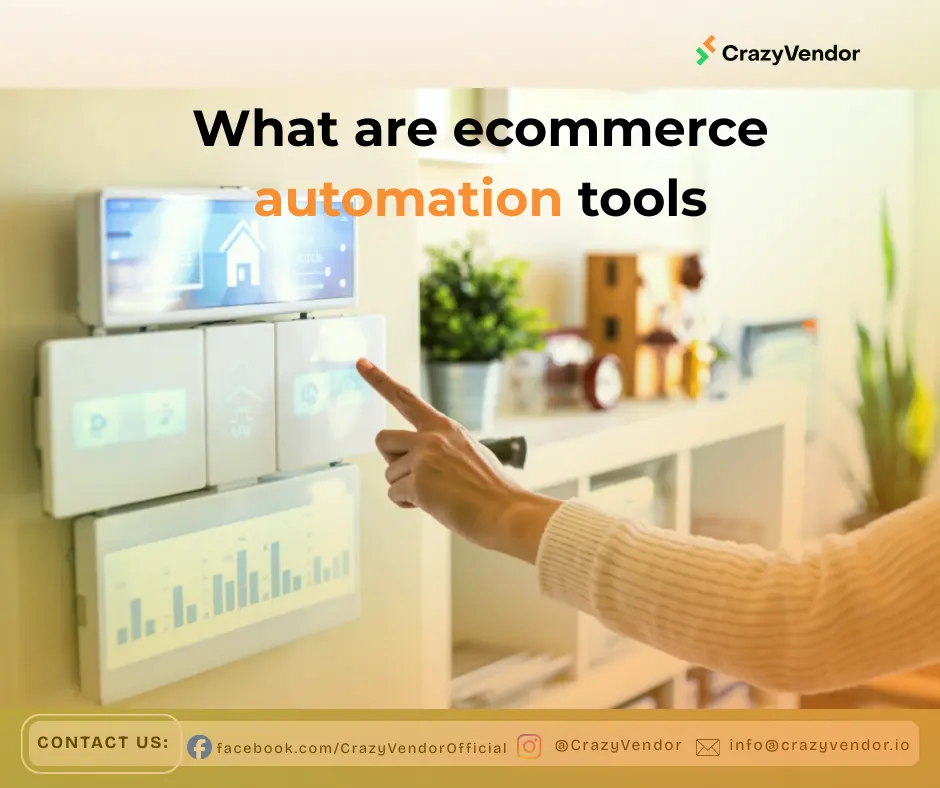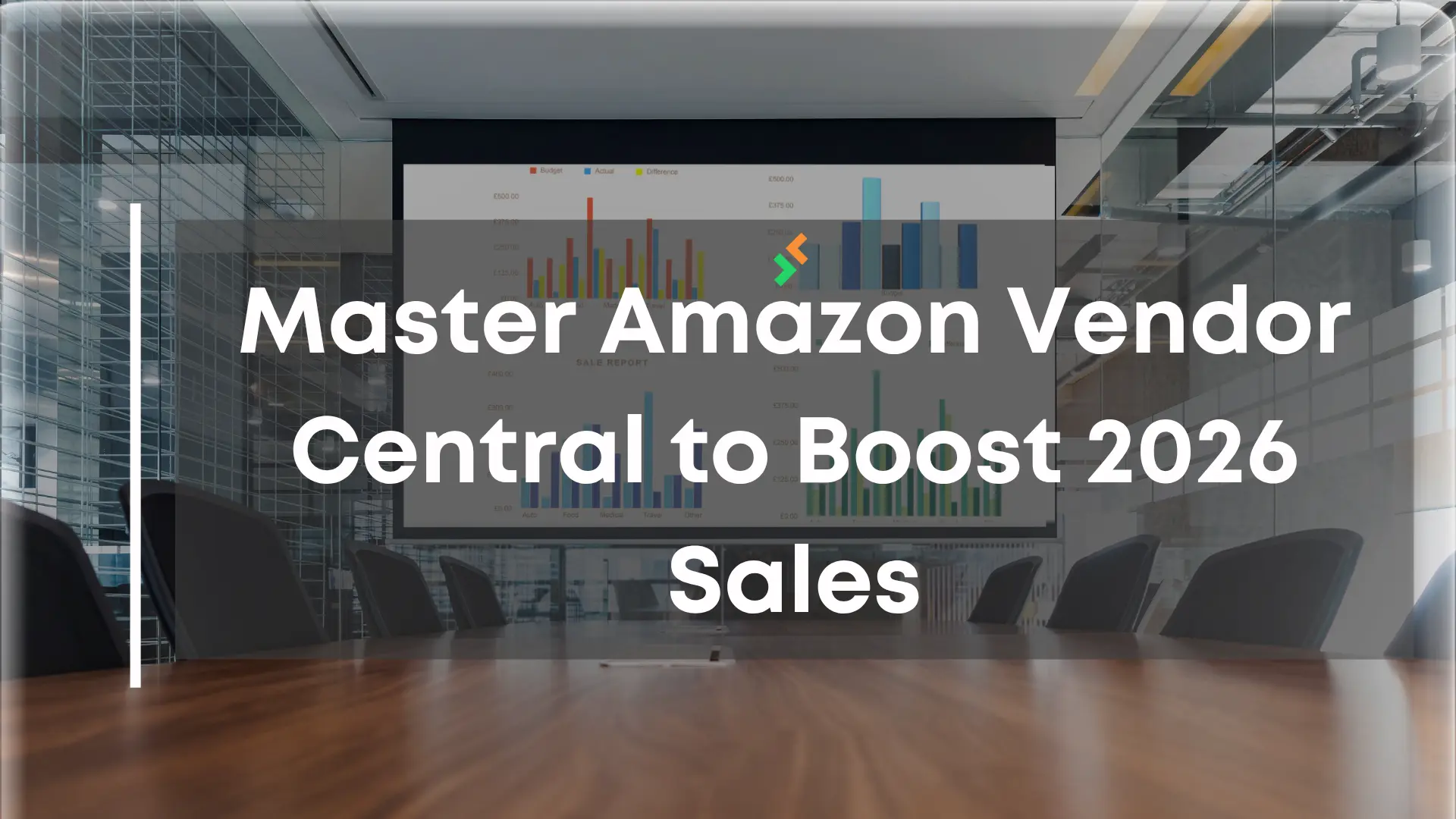
Have you ever wondered why so many sellers now use ecommerce automation tools to make daily work easier? These ecommerce automation tools remove slow steps that hold sellers back.
If you feel behind on orders, stock updates, or customer messages, you already know how hard marketplace selling can be. The good news is that simple tools can fix these problems fast.
What are ecommerce automation tools

ecommerce automation tools handle tasks you normally do by hand. They move orders, update stock, send messages, track profit, or create labels without waiting for you to click each step.
Sellers use them to save time, avoid errors, and keep every marketplace updated.
1. Order Management Automation Tool
An order tool helps sellers manage all new orders from many channels in one place. Many sellers struggle with late orders, missed updates, and switching between Amazon, Walmart, and Shopify tabs all day. This slows down handling time and increases the risk of mistakes.
CrazyVendor supports this through a simple Order Management page.
How does order automation save time
All new orders land in one list so sellers do not open many dashboards. This makes it easier to work fast without missing anything.
Why does this tool prevent late shipments
Orders move fast because each step follows a clear flow. This helps sellers stay within the marketplace handling time rules.
How does this help ratings
Fast handling leads to better buyer reviews and stronger seller scores. Good ratings improve your chance of winning the buy box.
2. Inventory Sync Automation Tool
An inventory tool keeps stock matched across Amazon, Walmart, and Shopify. Sellers often deal with overselling, wrong stock counts, and slow updates that cause unhappy buyers. Even a few minutes of delay can turn a good listing into a cancelled order.
CrazyVendor solves this by updating stock in real time through its Inventory Management feature, making sure every channel stays accurate without manual checks.
Why do inventory errors happen
Manual updates are slow and can cause overselling. Sellers often update one channel and forget another, which creates mismatched stock.
How does automation prevent overselling
The tool updates all channels the moment stock changes. This keeps the numbers correct even during busy selling hours.
How does this help with growth
Correct stock lets sellers add more products without fear of mistakes. Growth becomes easier when inventory stays stable.
3. Customer Message Automation Tool
A CRM tool helps sellers stay on top of customer messages and order updates. Many sellers feel overwhelmed when buyers ask the same questions or when messages pile up during busy hours. Slow replies lead to bad ratings and higher return rates.
CrazyVendor supports this with its Customer Service Management system, which can automate customer messages for Walmart and Amazon so buyers get fast, clear updates without waiting.
Why do automated messages matter
Buyers want clear updates without waiting. Simple messages like “your order shipped” reduce worry and build trust.
How does a CRM reduce case time
All messages stay on one page for faster replies. This helps sellers clear cases quickly and avoid long threads.
How does better support help sales
Good communication leads to better reviews and repeat buyers. Buyers who feel supported often return for future purchases.
4. Profit Tracking Automation Tool
A profit tool shows true earnings after fees, returns, ads, and shipping. Many sellers think they are making money until they see a payout that is lower than expected. Tracking everything by hand is slow and often wrong.
CrazyVendor helps fix this with Profit Analytics, which shows fees, margins, and real profit in one simple view so sellers always know which items earn and which items lose.
Why do sellers need profit tracking
High sales do not always mean high profit. Sellers must see real numbers to avoid items that quietly lose money.
How does real-time data change decisions
Sellers can adjust prices or remove weak items fast. This helps protect margins before small losses become big losses.
How does this support growth
A clear view of margins helps build a stronger catalog. Strong catalogs normally lead to steady long term profit.
5. Shipping Label Automation Tool
Shipping tools help sellers create labels fast and send tracking without manual steps.
CrazyVendor simplifies this inside its Shipping Management flow.
Why do manual labels cause delays
Copying details by hand can lead to slow handling or wrong labels. Errors in labels can also cause delivery issues or returns.
How does automation reduce mistakes
The tool pulls order data into the label automatically. This cuts manual work and makes shipping more reliable.
How does this protect ratings
Fast label work improves handling time and buyer trust. Better handling times help sellers stay competitive on all channels.
Conclusion
Ecommerce automation tools help sellers work faster, avoid mistakes, and keep every marketplace in sync. These tools save time by handling orders, stock, messages, profit, and shipping in simple steps. When small tasks run on their own, sellers can focus on growth instead of daily stress. With the right tools and a clear workflow, CrazyVendor helps sellers manage operations with speed and confidence.
Visit CrazyVendor to see how automation can help your store move faster.
Recommended reads for marketplace sellers
To understand multichannel growth better, you can read
Multichannel Selling Explained.
For tracking performance across channels, review
How to Track Walmart Sales for Smarter eCommerce Success.
For official product data guidance, visit Google Merchant Center Help.









